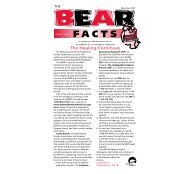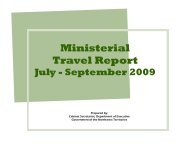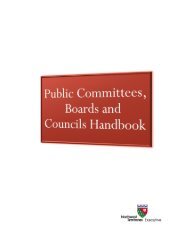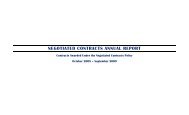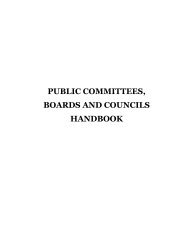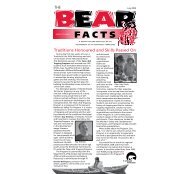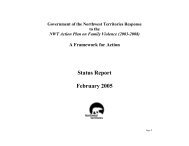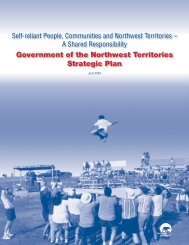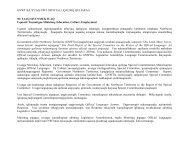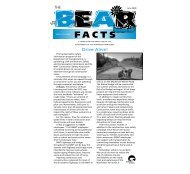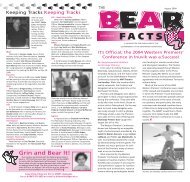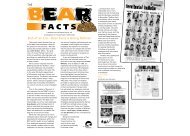Act Now - The Report of the WCB Legislative Review Panel to the
Act Now - The Report of the WCB Legislative Review Panel to the
Act Now - The Report of the WCB Legislative Review Panel to the
- No tags were found...
Create successful ePaper yourself
Turn your PDF publications into a flip-book with our unique Google optimized e-Paper software.
<strong>The</strong> way workers’ compensation boards deal with claims related <strong>to</strong> chronic pain andoccupational stress varies among jurisdictions.All jurisdictions, including <strong>the</strong> NWT/Nunavut, have provided compensation (usuallymedical treatment) for chronic pain. <strong>The</strong>re may be time limitations placed on suchcompensation. Some jurisdictions provide temporary financial compensation for chronicpain. A few jurisdictions will consider permanent financial compensation. Manyjurisdictions are reviewing <strong>the</strong>ir legislation and policies related <strong>to</strong> compensating injuredworkers for chronic pain.<strong>The</strong> situation with occupational stress also varies among jurisdictions. Whereoccupational stress is considered compensable, compensation is explicitly limited inlegislation <strong>to</strong> acute or post-traumatic stress syndrome. It may also be considered as atemporary injury or disease. As with chronic pain, many jurisdictions are reviewing <strong>the</strong>irlegislation and policies related <strong>to</strong> occupational stress.<strong>The</strong> way in which <strong>the</strong> NWT/Nunavut <strong>WCB</strong> deals with chronic pain and occupationalstress is governed by policy. <strong>The</strong> <strong>WCB</strong> provides medical compensation in <strong>the</strong> form <strong>of</strong>treatment at a pain clinic. An injured worker is eligible for temporary financialcompensation. If <strong>the</strong> chronic pain is based on a demonstrable organic cause, permanentfinancial compensation may be considered.<strong>The</strong> way in which <strong>the</strong> NWT/Nunavut <strong>WCB</strong> deals with occupational stress is governed bypolicy. Only acute or post-traumatic stress is eligible for compensation.It is clear <strong>to</strong> <strong>the</strong> <strong>Panel</strong> that <strong>the</strong> workers’ compensation environment related <strong>to</strong> chronicpain and occupation stress is a changing one. It is also clear that one <strong>of</strong> <strong>the</strong> majorconcerns <strong>of</strong> workers’ compensation boards when addressing <strong>the</strong>se and o<strong>the</strong>r “injuries” oroccupational diseases is increased costs.<strong>WCB</strong> <strong>Legislative</strong> <strong>Review</strong> <strong>Panel</strong> <strong>Report</strong> Page 49 <strong>of</strong> 128December, 2001



